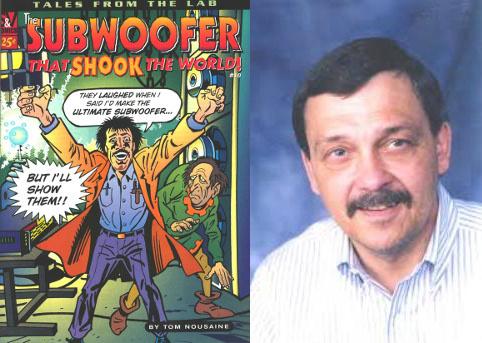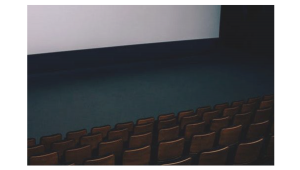I’m very sorry to learn of this. Tom Nousaine was one of the legends of objectivist audio, and his work and writings really impacted me when I got into speaker building years ago. He was, of course, a key figure in the original version of Sound and Vision. Truly, he was one of the “White Hats” of the audio world, especially at a time when peddling snake oil was the rule. Many thanks to him. He will be missed, and remembered, and his work will live on. I hope that S&V will consider making his subwoofer reports and other writings available to all.
The King of Subs

As we went to press for the upcoming September print issue, word began circulating about the passing of Tom Nousaine, long-time former contributor to Sound & Vision, its predecessor Stereo Review, and several other home and car audio magazines. He was 69 years old.
Tom was a one-of-a-kind character, a business manager by day for Ameritech (one of the Baby Bells) prior to his retirement, and a tireless audio enthusiast and writer in the rest of his waking hours. He was a contrarian who believed in the objective, engineering-based school of hi-fi and despised the flowery language, hyperbole, and (in his view) chicanery of the high-end audio industry that was burgeoning in the 1990s and 2000s. So, like an audiophile version of those Mythbusters dudes, he took on the charlatans every chance he got, using the bully pulpit of the audio press and a mix of pre-established research, lab measurements, blind listening tests, and annoyingly tenacious but usually irrefutable logic to debunk what he called the “urban legends” of audio: that fancy cables improve sound quality, that vinyl sounds better than CDs, that changing the dielectric in an amplifier capacitor changes the sound, et. al. (You can find a selection of his work at Nousaine.com.)
In a 2002 article in the Audio Critic, Tom noted how the very idea of audio reproduction naturally lends itself to hearing sonic differences that aren’t really there. He wrote: “Anyone who has ever heard a phantom [center] image, sound coming from a location where no sound is being made, knows that audio reproduction is magic. Like the first trick at a magic show, the mere demonstration of stereophony, in and of itself, helps establish a willingness to suspend disbelief. Unfortunately, with audio, the audience is encouraged to remain in suspension following the show. I think we are maximally susceptible to suggestion because we already know audio is magic when we start.”
For Tom, the real magic was in the lower octaves. He was a gleeful pursuer of the deepest, loudest bass and measured countless subwoofers through the years in an effort to find those that drove the most sound-pressure level with the lowest distortion at the lowest frequencies. His greatest claim to fame was the gargantuan homemade sub he built in his own basement. Contained in a floor-to-ceiling column that vented into his listening room above, it housed eight opposing, inward-facing 15-inch woofers driven by 1,600 watts of power. Tom documented the project in a 1999 S&V article, “The Subwoofer That Shook the World.”
Once, during my tenure as S&V’s executive editor in the mid 2000s, I spent a day at Tom’s house in Pinckney, Michigan, to work with him on some speaker measurements. I found a home fully relinquished to his passion. There was audio gear and test instruments everywhere, and a computer on a tall rack in his kitchen set up alongside the entryway to the vaulted ceiling living room where he conducted his tests. A long cable snaked to the measurement mike perched high on a stand opposite the platform on the test rig, built from scaffolding that situated the speaker high off the ground. You would have known Tom was single at the time just by the décor. I remember him patiently teaching me how quasi-anechoic measurements work and showing me how gating out the room reflections ensures you measure the response of the speaker and not the boundaries. At the time, that seemed like magic, too.
I was also led down to the basement that day to survey his humongous sub; sadly, it was under renovation and couldn’t be demo’d. But if there’s hi-fi in heaven, I’m willing to bet it’s up and running right about now, shaking some serious booty.
- Log in or register to post comments


To make a good article, extraordinary data is required. Moreover, an awesome investigator can make a best article. That kind of expert writers is the essential specific of best essay writing service. Additionally, in like manner understudies like their administration specifically.






























































